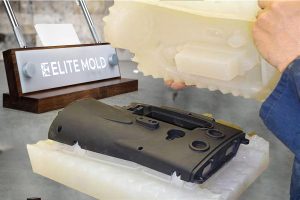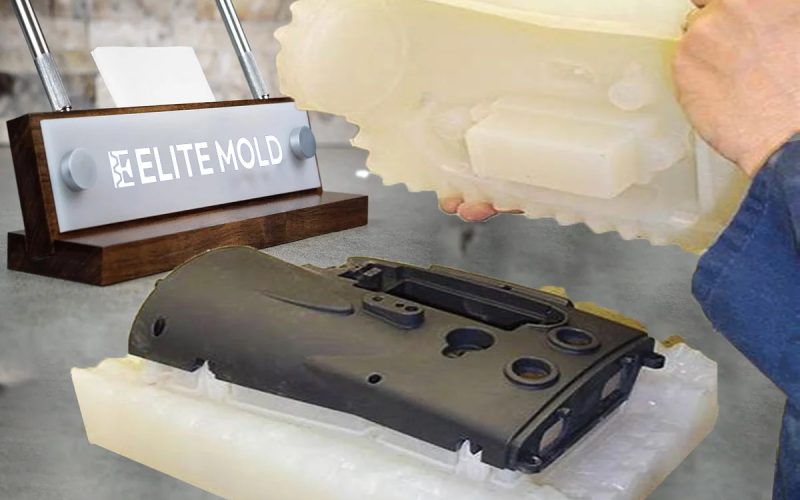In today’s competitive and fast-moving market, companies are under constant pressure to bring products to market faster than ever before. Whether launching a new product or iterating on an existing one, time plays a crucial role in determining a company’s success. Quick turn molding has emerged as an essential solution for businesses looking to shorten their product development cycle while maintaining quality and precision. Quick turn molding allows manufacturers to produce plastic parts quickly, making it especially valuable during prototyping and early production stages.

Understanding Quick Turn Molding
Quick turn molding, also known as rapid injection molding, is a streamlined approach to traditional plastic injection molding. It is designed specifically for speed and flexibility, enabling the rapid production of molded parts, often within days or a couple of weeks. The process is particularly popular in industries such as consumer electronics, medical devices, automotive, and aerospace, where innovation cycles are short, and time-to-market is critical.
Unlike traditional molding, which may take several months to deliver a final part due to complex tooling and lengthy setup processes, quick turn molding significantly reduces lead time. This is achieved by using simplified tooling methods, often involving aluminum instead of hardened steel, and optimized workflows that eliminate unnecessary delays. The result is a much faster turnaround, making it possible to go from concept to part in record time.
Key Features of Quick Turn Molding
One of the defining characteristics of quick turn molding is the use of fast, low-cost tooling. Instead of investing in expensive and time-consuming steel molds, manufacturers can create molds from aluminum or soft steel, which are easier and quicker to machine. These tools are typically capable of producing thousands of parts—more than enough for prototypes or short production runs.
Quick turn molding also uses digital manufacturing techniques such as CAD-driven mold design and CNC machining, allowing for high precision and fast modifications. If a design change is needed, the tooling can be quickly updated or remade without the long delays that accompany traditional methods.
Because of these characteristics, quick turn molding is well-suited for projects where speed, flexibility, and cost-efficiency are more important than long-term durability of the mold.
How It Differs from Traditional Molding
While both quick turn molding and traditional injection molding aim to produce high-quality plastic parts, the two processes are quite different in terms of speed, cost, tooling, and intended use.
Traditional injection molding involves the creation of robust, hardened steel tools that are designed to last for hundreds of thousands to millions of cycles. This makes it ideal for large-scale production, where the cost of tooling can be spread across a high volume of parts. However, the tooling process is complex, time-consuming, and expensive, often taking 8 to 12 weeks to complete.
In contrast, quick turn molding focuses on short runs and rapid delivery. The tools used in quick turn molding are not built for longevity but for speed and ease of production. This trade-off allows for dramatically shorter lead times, typically between 1 to 3 weeks. Quick turn molds are less expensive to produce, although the per-part cost may be slightly higher than traditional molding in high volumes due to the shorter tool life.
Another key difference lies in flexibility. Traditional molding is best suited for finalized designs that are unlikely to change. In contrast, quick turn molding allows for iterative development, where designers can make and test changes rapidly. This is especially useful in the prototyping phase, where multiple design versions might be tested before committing to a final product.
Benefits of Quick Turn Molding
The primary advantage of quick turn molding is speed. For companies looking to shorten development cycles and respond quickly to market demands, the ability to produce functional parts in days instead of months is a game changer. It enables faster design validation, quicker product iterations, and early customer feedback, all of which contribute to better final products.
Another benefit is lower initial cost. While the cost per part may be higher in small volumes, the reduced investment in tooling and setup makes quick turn molding more accessible for startups, small businesses, and product development teams operating on tight budgets.
Quick turn molding also reduces risk. By allowing companies to create and test prototypes using production-grade materials and processes, it provides a realistic preview of how the final product will perform. This can prevent costly design errors and manufacturing issues later in the production cycle.
Additionally, quick turn molding serves as an excellent bridge to full-scale production. Companies can use quick turn molds to produce early batches of parts while waiting for traditional molds to be completed, ensuring continuity in development and early product launch.
When to Use Quick Turn Molding
Quick turn molding is the ideal solution when speed, flexibility, and cost-efficiency are critical. It is commonly used for creating functional prototypes, producing parts for initial testing, and manufacturing small batches of components for pilot runs or limited launches. It is also valuable in situations where final production tooling is delayed or when only a limited quantity of parts is needed.
This process is not typically suitable for high-volume production or parts that require ultra-high precision over long production runs. In those cases, traditional molding remains the preferred method due to the durability and longevity of its tooling.
Conclusion
Quick turn molding has transformed the way products are developed, tested, and brought to market. By offering a faster, more flexible, and cost-effective alternative to traditional molding, it enables companies to innovate quickly and respond to customer needs with greater agility. While it may not replace traditional injection molding for large-scale production, it plays an essential role in prototyping, short-run manufacturing, and bridging the gap between concept and commercialization. As industries continue to prioritize speed and adaptability, quick turn molding is likely to become an even more vital part of the manufacturing landscape.












